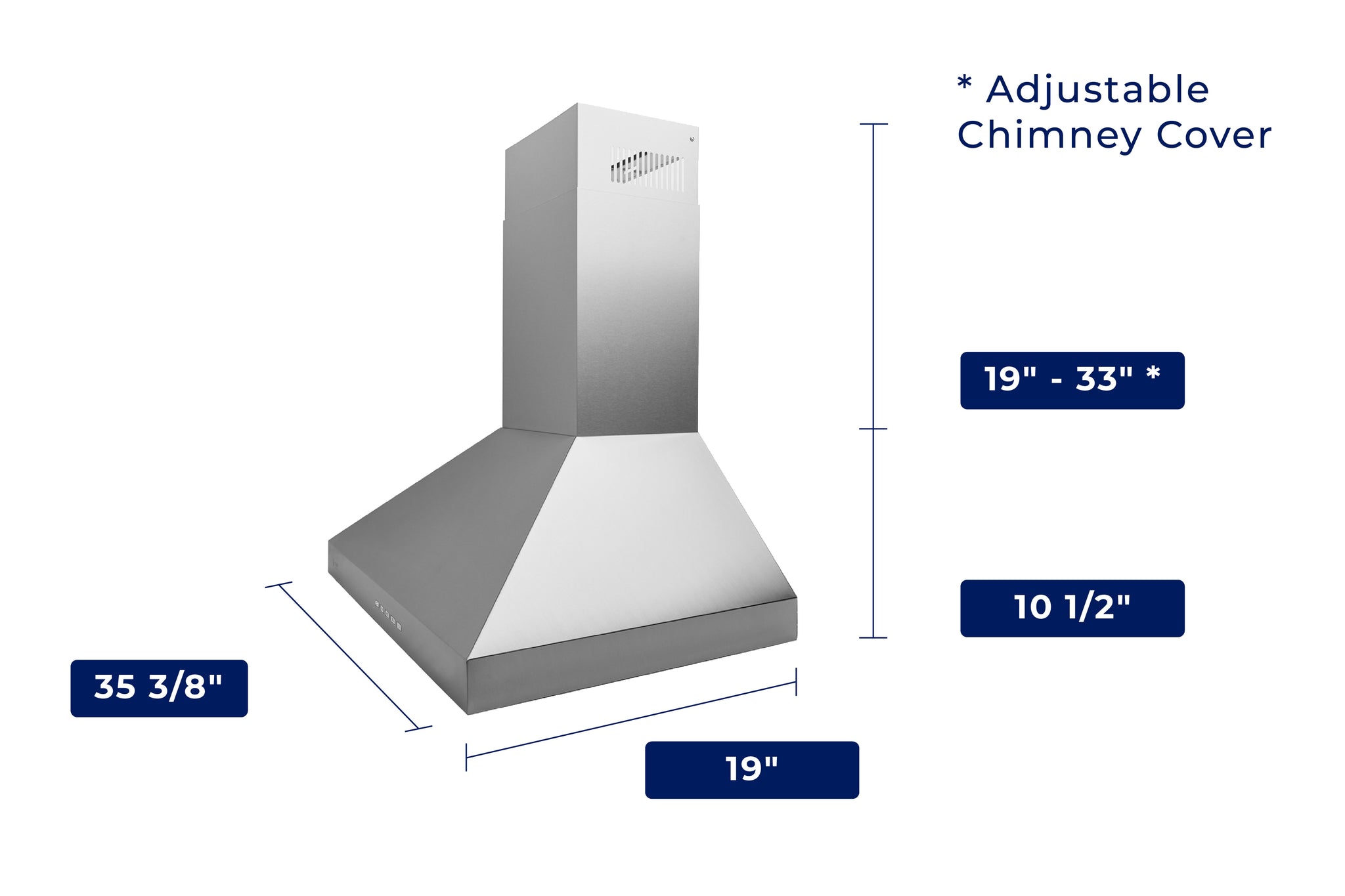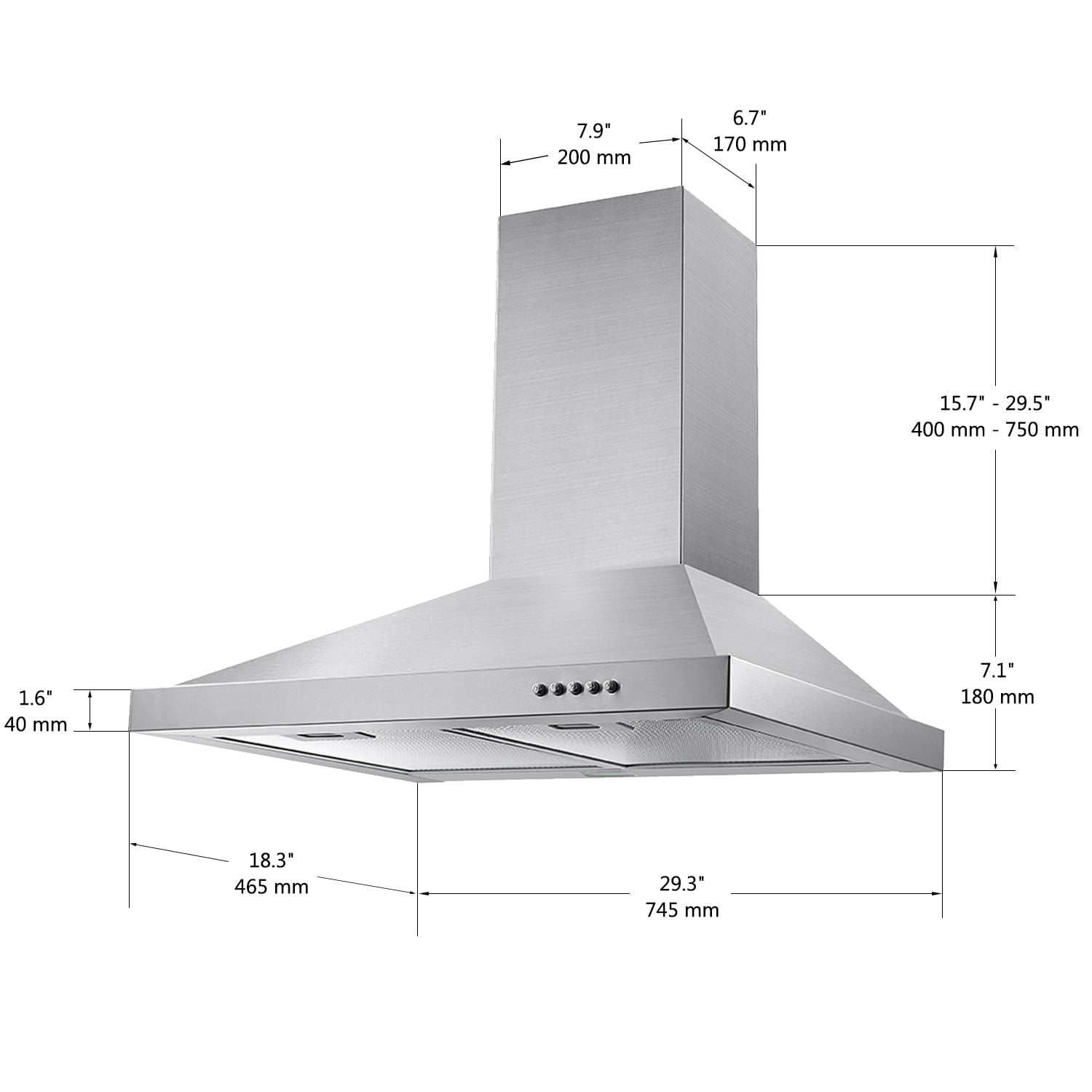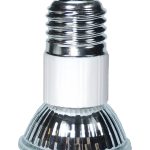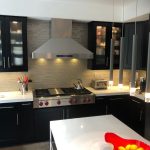Introduction
A range hood is an essential component of any well-designed kitchen, serving as the primary line of defense against smoke, steam, grease, and odors generated during cooking. Its ability to efficiently extract these pollutants directly from the cooking surface is crucial for maintaining a clean, healthy, and comfortable environment in your culinary space. Among the various factors that contribute to a range hood’s effectiveness, its depth plays a pivotal role. In this comprehensive guide, we will delve into the significance of range hood depth, how it impacts performance, and what considerations you should keep in mind when selecting the right fit for your kitchen.
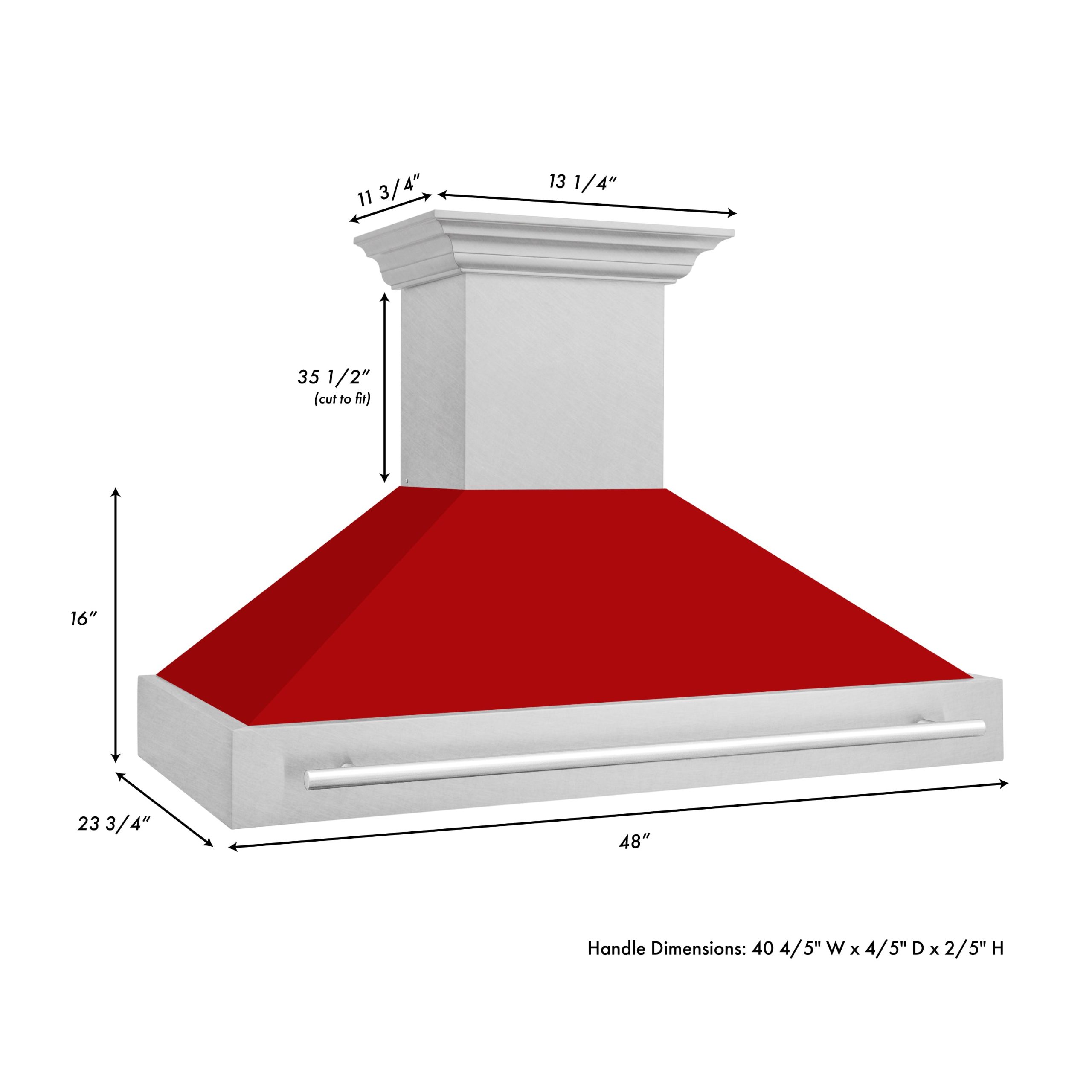
The Importance of Range Hood Depth
Range hood depth refers to the distance the hood extends over your cooktop or range, typically measured from the wall or cabinet to the front edge of the hood. This dimension is critical because it determines the hood’s proximity to the cooking surface, which directly influences its ability to capture and contain cooking effluents:
Efficient Capture:
A properly sized range hood should have a depth that allows it to encompass the entire cooking area, ensuring that smoke, steam, and grease are captured before they can disperse into the surrounding air. The closer the hood is to the cooktop, the more effectively it can draw in these contaminants.
Airflow Optimization:
Adequate depth enables the hood to create an effective suction zone, where the velocity of air drawn into the hood is highest. This zone is crucial for capturing airborne particles and directing them into the hood’s filtration system or ductwork. Insufficient depth may result in inadequate airflow, leading to poor ventilation performance.
Cooking Convenience:
A range hood with the appropriate depth provides ample headroom for tall pots and pans without obstructing the cook’s movements or impeding visibility. Conversely, a hood that is too deep may cause inconvenience by occupying valuable workspace or interfering with the operation of overhead cabinets.
Factors Influencing Range Hood Depth Selection
When choosing the right range hood depth for your kitchen, consider the following key factors:
Cooktop Size and Configuration:
The dimensions and layout of your cooktop should dictate the minimum required depth for your range hood. For standard 30-inch or 36-inch cooktops, a range hood with a depth of 24 inches to 27 inches is generally sufficient. However, if you have a larger cooktop, a professional-grade range, or a cooktop with multiple burners or griddle sections, you may need a deeper hood to ensure full coverage.
Cooking Style and Frequency:
If you frequently engage in high-heat cooking methods like stir-frying, searing, or wok cooking, which generate significant amounts of smoke and steam, a deeper hood can provide enhanced containment and ventilation. Similarly, if you regularly use oversized cookware or tend to stack pots and pans on the stove, a deeper hood can accommodate these taller items without compromising performance.
Kitchen Layout and Space Constraints:
The available space above your cooktop, as well as the presence of upper cabinets or other obstructions, will influence the maximum feasible depth for your range hood. It’s essential to measure the clearance between your cooktop and the bottom of the cabinets or ceiling to determine the compatible hood depths. Remember to factor in any necessary clearances for proper installation and maintenance.
Aesthetics and Design Preferences:
Range hoods come in various styles, from sleek under-cabinet models to dramatic island hoods. The depth of the hood can significantly impact its visual appeal and overall kitchen aesthetics. Choose a depth that complements your kitchen’s design, while ensuring it fulfills its functional requirements.
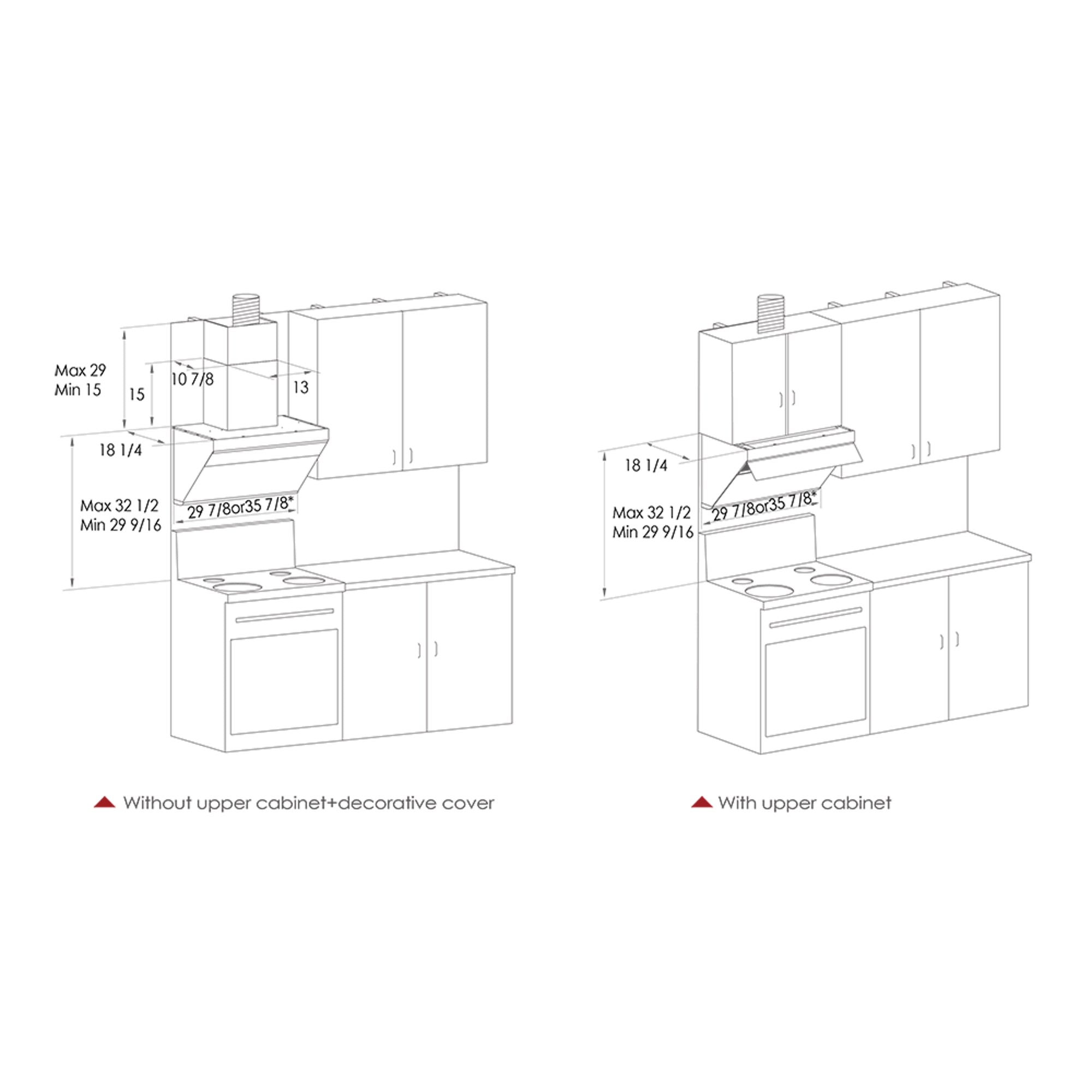
Suction Power (CFM):
The hood’s suction power, measured in cubic feet per minute (CFM), indicates its ability to remove contaminated air from the kitchen. A higher CFM rating generally corresponds to better ventilation performance. To determine the appropriate CFM for your kitchen, consider the size of your cooktop, the type of cooking you do, and the hood’s ducting configuration. As a general rule, aim for a CFM rating that is at least 100 CFM for every 10,000 BTUs of total cooktop heat output, with adjustments made based on your specific circumstances.
Ducting Options:
Range hoods can be vented either through a ducted system, which expels air outside the home, or through a ductless (recirculating) system, which filters and recirculates the air back into the kitchen. Ducted systems generally offer superior ventilation performance, as they eliminate cooking contaminants entirely. However, they require access to an exterior wall or roof and may necessitate more complex installation. Ductless systems, on the other hand, are more flexible in terms of placement and installation but may not be as effective at removing smoke, steam, and strong odors.
Filtration System:
The hood’s filtration system plays a crucial role in trapping grease and other particulate matter. Most range hoods utilize either aluminum mesh or baffle filters, which can be easily removed and cleaned in the dishwasher. Some high-end models feature charcoal or carbon filters for odor absorption in ductless systems. Ensure the hood you choose has a robust and easy-to-maintain filtration system that aligns with your chosen ducting option.
Noise Level:
Range hoods can produce varying levels of noise during operation, which may affect your comfort and enjoyment while cooking. Look for models with decibel (dB) ratings that suit your sensitivity to noise. Generally, hoods with lower CFM ratings or those equipped with noise-reducing technologies like insulated ductwork, fan speed controls, or sound-absorbing materials will operate more quietly.
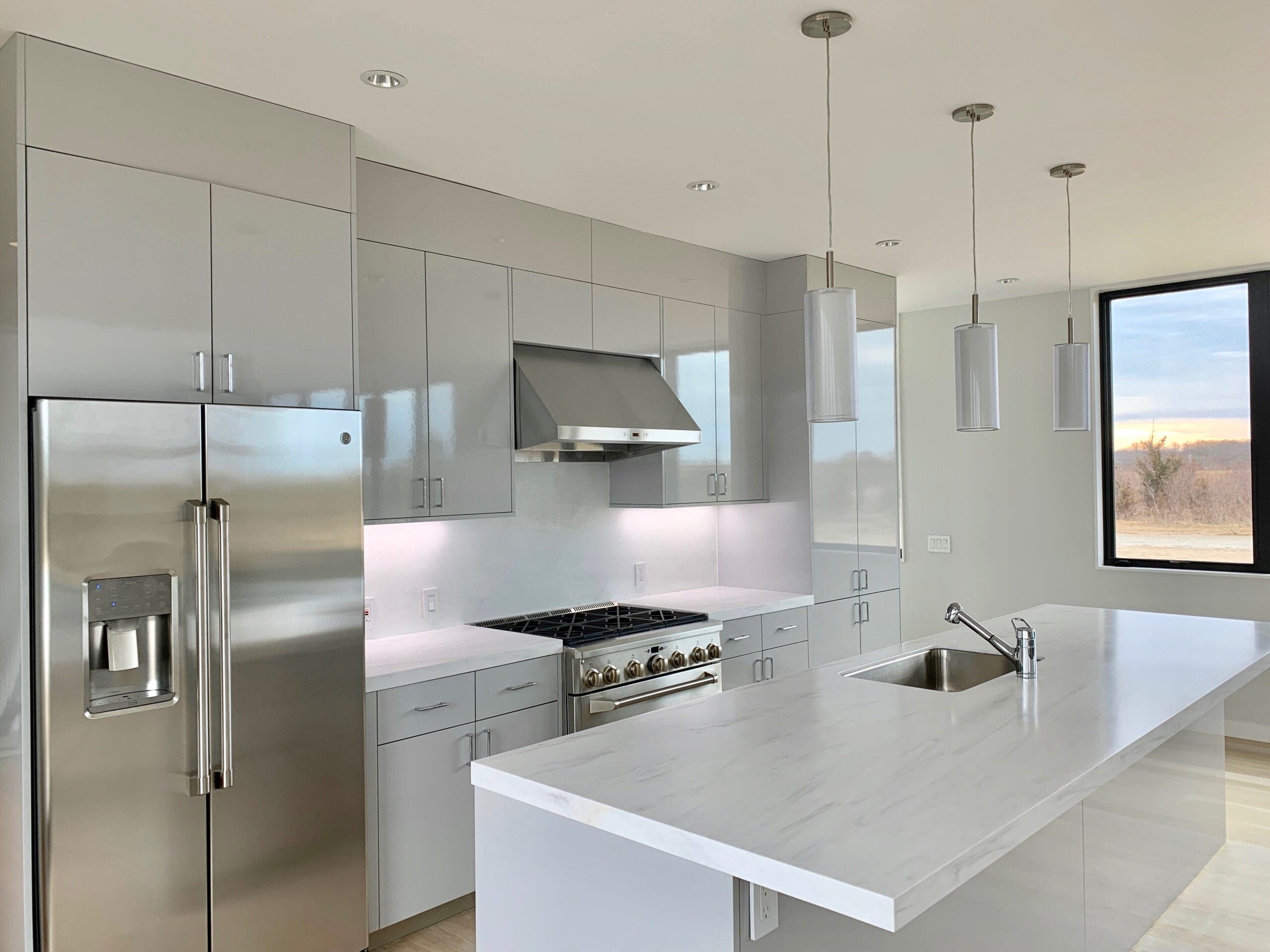
Lighting and Controls:
Effective lighting is essential for illuminating your cooktop and workspace. Range hoods often come with built-in LED or halogen lights. Consider the brightness, color temperature, and adjustability of the lighting to ensure it suits your needs. Additionally, evaluate the hood’s control panel for ease of use, intuitiveness, and any additional features like delayed shut-off, auto-speed adjustment, or remote control compatibility.
Professional Installation and Maintenance:
To ensure your range hood operates at peak efficiency and longevity, professional installation is highly recommended. A skilled technician can ensure proper ductwork connections, adequate ventilation, and compliance with local building codes. Regular cleaning and maintenance, including filter replacement (if applicable) and internal component checks, are also crucial for maintaining optimal performance.
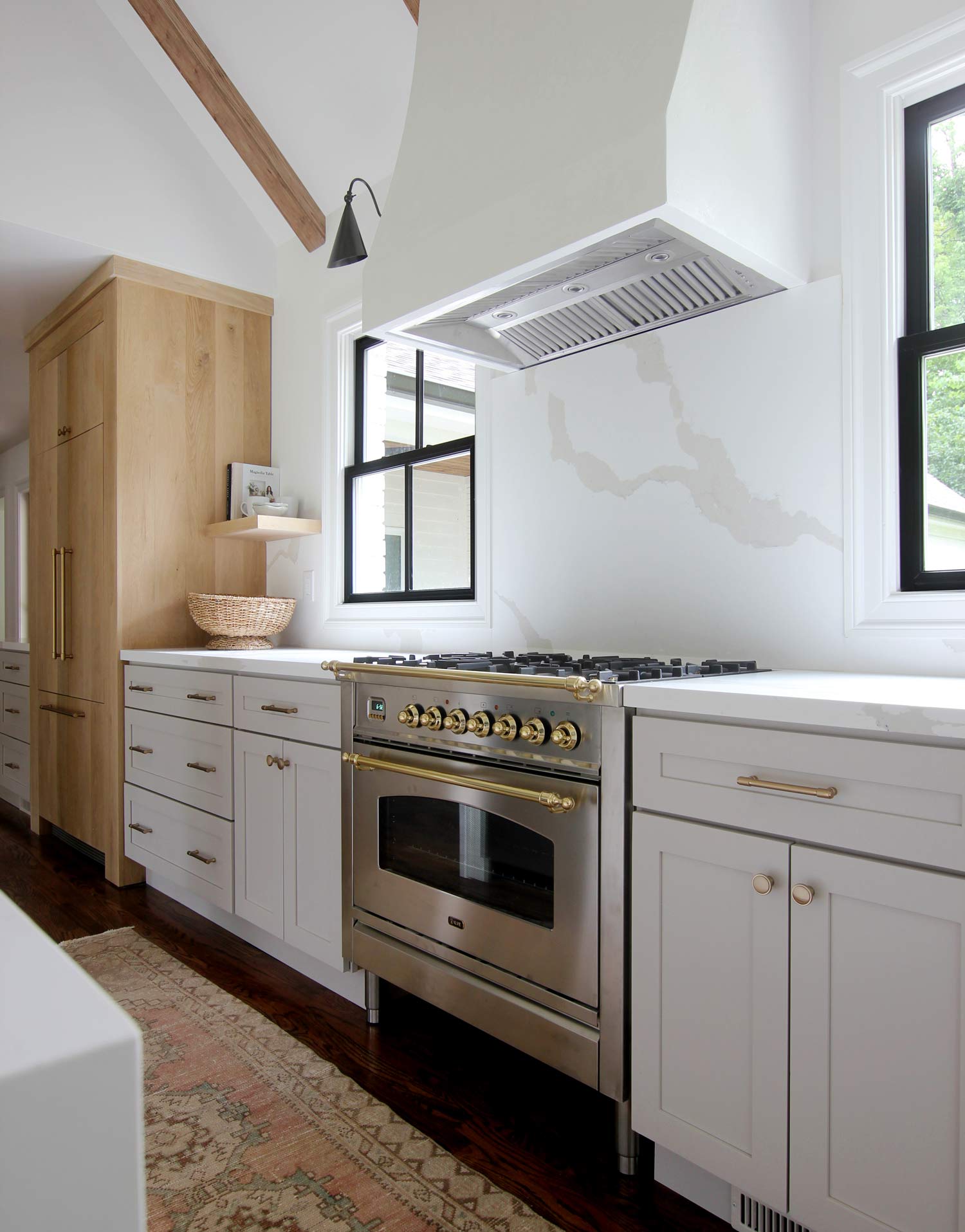
Conclusion
Understanding range hood depth is vital for selecting an appliance that not only enhances the look of your kitchen but also performs its core function of efficient ventilation effectively. By considering factors such as cooktop size and configuration, cooking style and frequency, kitchen layout and space constraints, and aesthetic preferences, you can make an informed decision that ensures the perfect fit for your unique culinary space. Investing time and effort into choosing the right range hood depth will result in a cleaner, more enjoyable, and healthier cooking environment for years to come.
